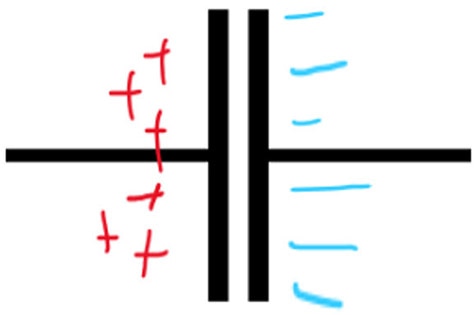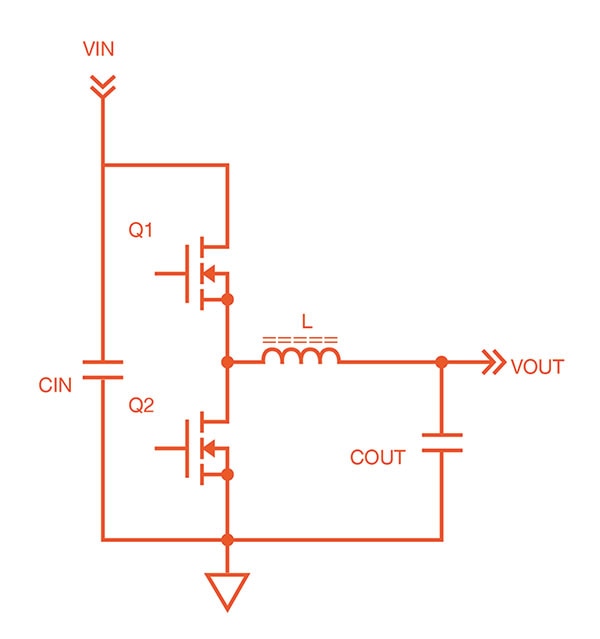Capacitor Deep Dive: Circuit Protection, Filtering, and Energy Storage
2024-12-13 | By Will Siffer
When it comes to circuit design, it's easy to forget to add capacitors when you are just trying to build a simple circuit. The truth is, until just a few years ago, I never really added capacitors to my projects because I wasn’t sure I even needed them. Eventually, I took some classes in school, and I was given some real examples of when to use capacitors and how they worked. From circuit protection to filtering and from energy storage to sensing, I’m diving into the simply complex world of capacitors.
How do these things even work?
The truth is, that all that makes up a capacitor is two conductors separated by an insulator. You can actually even make one yourself, setting two wires next to each other in parallel with an insulator in between will even make a (pretty weak) capacitor. But how does it work? If the two sides are separated by an insulator, then how come current can flow through it?
The answer lies in what is called the “electric field.” Imagine a capacitor at rest with no power going to either end. Each conductor would have the same charges in balance, and there would be no flow between or away from the plates.

This capacitor is at rest and has no effective energy storage. The magic happens when you connect it to a battery. Imagine now we take the same capacitor and connect the left side to positive and the right side to ground. Now there’s a voltage potential across the plates, and since the plates are so close together, they actually have an effect on each other.

Notice now what has happened? The battery acted as a pump and pushed all of the electrons from one side of the capacitor to the other. For a short while, this happened quickly at first as there were more electrons to move but then slowed down as the capacitor “charged” and the plates each were carrying their own unique charge. When using a DC battery this can only happen one time until the capacitor is given a chance to return to equilibrium, a very important fact to remember when I talk about applications later in this blog.
When you remove the battery from the capacitor each plate will still carry the charge from before, waiting to be discharged and returned to a more stable equilibrium state. If you shorted the two leads together the capacitor would act the same way as it did when it charged but in reverse, quickly returning to a steady state and slowing as fewer charges had to make their way to their respective sides.
This is cool and all, but basically, all we did is show how a capacitor acts sort of like a battery that can be charged and discharged very quickly. This is pretty much only useful in applications where short bursts of high energy are required, such as disposable camera flashes and electric firework ignitors. What about some of their other less obvious applications?
AC Applications: Filtering
The same principles I just mentioned above can be applied to the rest of these applications, but in this case, we are going to talk about filtering frequencies. Consider a low frequency signal; as the frequency gets lower and lower the signal eventually appears to be a simple DC source. As we discovered above, the capacitor will not let DC sources through so if we want to block a low frequency, we can simply add a capacitor to the input of our device and the capacitor will only allow the high frequency parts of the signal through. This is called a High Pass Filter
High Pass Filter Example
What if, instead we only wanted to let low frequencies through? Well, all we would have to do is switch the order of the capacitor and resistor and the high-frequency part of the signal would be shorted to ground while the low frequencies could “float” across the capacitor to the output. This is called a Low Pass Filter.
Low Pass Filter Example
AC Application 2: Noise Filtering
Now imagine you took the same idea as the low pass filter but simply connected your power supply and ground together with a capacitor. At first, the capacitor would act like a short circuit, but quickly it would charge, and it would only allow the DC aspect of your supply to continue while shorting to ground any high-frequency noise. This is why in many circuits with integrated circuits (IC’s) it is recommended to put a capacitor across the power and ground pins somewhere physically close to the chip. This allows for the least amount of noise to make it to the IC and affect its function.
Bonus Application: Sensing
The final application I want to discuss here is the ability of a device to use capacitance as a sensor. Imagine your phone screen, or just take a moment to look at it now, maybe you are reading this blog and scrolling with the touch screen. Built inside of your phone screen there is a large conductor that is connected at each corner with resistors to a sensing circuit. On top of that layer is the LCD and eventually the glass surface. Your finger is conductive, and your body makes up a path to ground. When you touch the screen, the sensing circuit senses a change in capacitance of the large conducting area, and the circuit can use the four connection points to the layer to determine where on the screen your finger must be based on how current flows through each location.
Wrap up
This is by no means a complete list or education on how a capacitor works, but I hope this guide offered some insight into the “why” of this component for when you build your next project. I find that sometimes the why can be just as important, if not more important, than the technical aspects of how to use something.
Until next time, my name is Will, and I hope you learned something new today.
Have questions or comments? Continue the conversation on TechForum, DigiKey's online community and technical resource.












